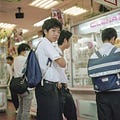This cited writing was originally published on Medium.com and republished on The Muck Rack in 2020. I closed both profiles to maintain this substack.
The rise of gun violence in the United States stands out among Western, developed nations. While the issue at hand has been well described, conclusive decisions and their actions have remained a focus in debates. The average number of people who died during 2001 to 2008 has doubled during 2009 to 2018 (John R Lott Jr.). This statistic does not take into account gang fights and suicides. Without a doubt the issue of mortal violence calls to question how defense measures should be handled, by examining whether or not to allow or ban the carry of concealed weapons. Weighing both sides of the argument for or against concealed carry of weapons on campus among college students, professors, and other college employees opens up the underlying issues at the heart of violence in public spaces.
The overall lack of data for or against concealed carry of weapons poses a threat to adding fear to the situation. Already poised in a position of unease from recent school violence, teachers and students alike have reported interrupted sleep and difficulty focusing (Rajan, Sonali, and Charles C Branas). The notion having a first line of defense in a situation, suggests permitting individuals to carry a weapon diminishes an individuals’ sense of alertness, creating a sense of false security. The relief of distress reveals itself as temporary by-product by immediately opening up areas of doubt. Metal detectors which could protect people inside the building from outside intrusions does not take into account, those who seek to create violence have little regard for metal detectors. Doors can be locked to inhibit the flow of people in and out of the building, and again pose a threat to armed people from breaking locking mechanisms. The design of schools can be adapted for security and quickly start to feel like a prison. When more fully considered, arming individuals seems to mitigate the need for various extra measures of prevention, yet conflicts with another set of accumulated data and individual experience: the responsibility and margin for error.
Training for usage of weapons involves layers of federal, local, institutional and personal responsibility. In an active event, individual response times and accuracy vary widely. Both practical and psychological training are required. The cost of arming guards to distribute the responsibility of safety and the mental loads on teachers and administrators would add 30% to the federal spending budget on education (Rajan, Sonali, and Charles C Branas). The presence of the guards is considered to create first line targets for perpetrators of violence who may go onto harm others. Those who commit violence on student campus may go on to commit suicide. The need for security personal becomes quickly replaced by the need for medical assistance.
Underlying levels of distress in wondering who is carrying a weapon poses a difficult metric-to-measure. The impact of adding the several layers of weapon training to teacher and administrator responsibilities adds several layers to jobs which are already dynamic in terms of education, psycho-social relationships, instilling values and integrity often in varied backgrounds and home situations. Once an active and potentially lethal situation has begun, returning acts of violence increases the probability for further harm. Preventing the violence in the first place is widely accepted as the first line of defense. Equipping educators with weapons is considered a secondary and tertiary lines of defense (Rogers, Melanie). With regards to fears about rights for firearms, the classroom and educational facilities are intended to remain active in first line of defense measures, through well documented data and measures of public health. Arming educators offers additional margins of error that can increase the risk for violence instead of mitigate the effort to resolve the tensions (Rajan, Sonali, and Charles C Branas). Measures of public health focus on prevention and addressing the underlying psychology components and addressing changes to the overall cultural dynamics within the community and educational settings.
Conclusion
At this time, the lack of empirical data makes arming educators inconclusive (Rajan, Sonali, and Charles C Branas). Increased security has not been found to be correlated to arming teachers or administrators. Without more empirical data and considering the several lines of defense to prevent violence in education, weapons remain at the bottom of the list of solutions for violence in the classroom (Rogers, Melanie).
Works Cited
Lott Jr., John R., Schools that Allow Teachers to Carry Guns are Extremely Safe: Data on the Rate of Shootings and Accidents in Schools that allow Teachers to Carry. Crime Prevention Research Center, April 17, 2019, https://ssrn.com/abstract=3377801. Accessed 11 March 2020.
Rajan, Sonali, and Charles C Branas. “Arming Schoolteachers: What Do We Know? Where Do We Go From Here?.” American journal of public health vol. 108,7 (2018): 860–862. doi:10.2105/AJPH.2018.304464. Accessed 11 March 2020.
Rappaport, Nancy MD, and Barrett, James G., PhD, Virtual Mentor.2009;11(2):149–154. doi: 10.1001/virtualmentor.2009.11.2.pfor1–0902. https://journalofethics.ama-assn.org/article/under-gun-threat-assessment-schools/2009-02. Accessed 11 March 2020.
Rogers, Melanie et al. “Is Arming Teachers Our Nation’s Best Response to Gun Violence? The Perspective of Public Health Students.” American journal of public health vol. 108,7 (2018): 862–863. doi:10.2105/AJPH.2018.304477. Accessed 11 March 2020.















Concealed Carry